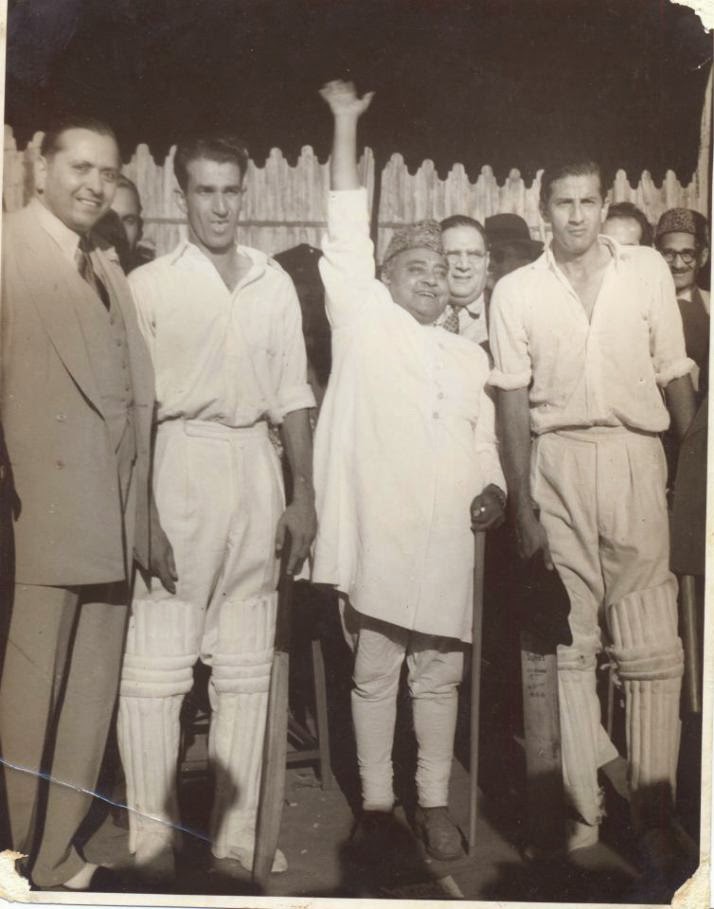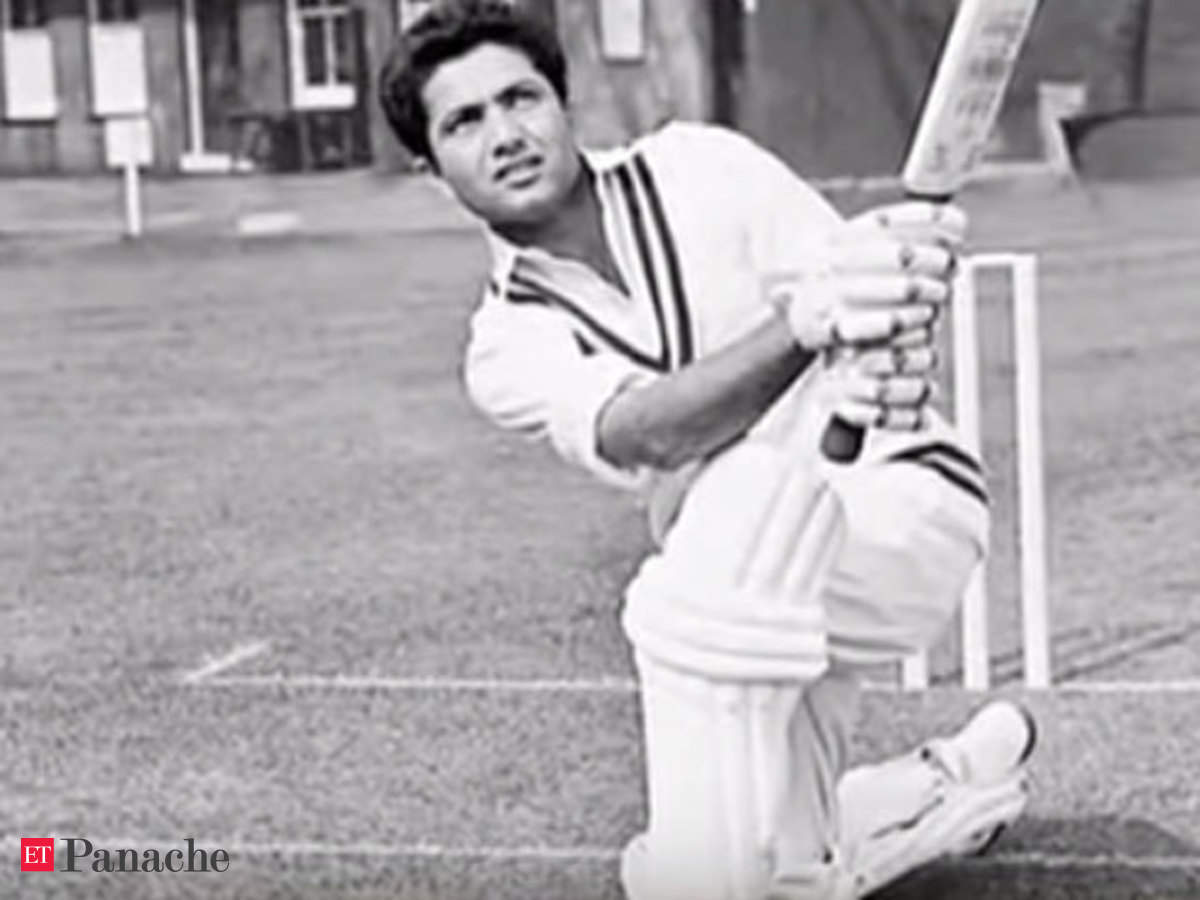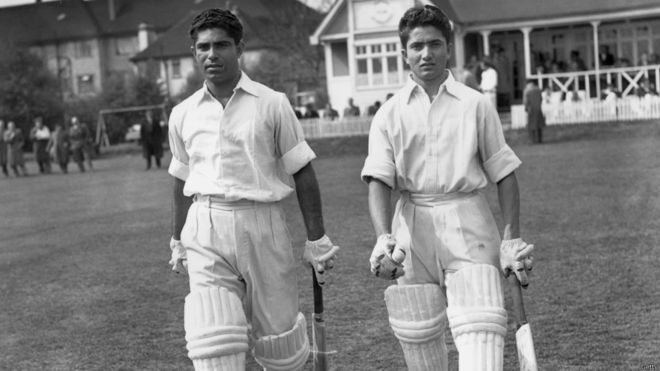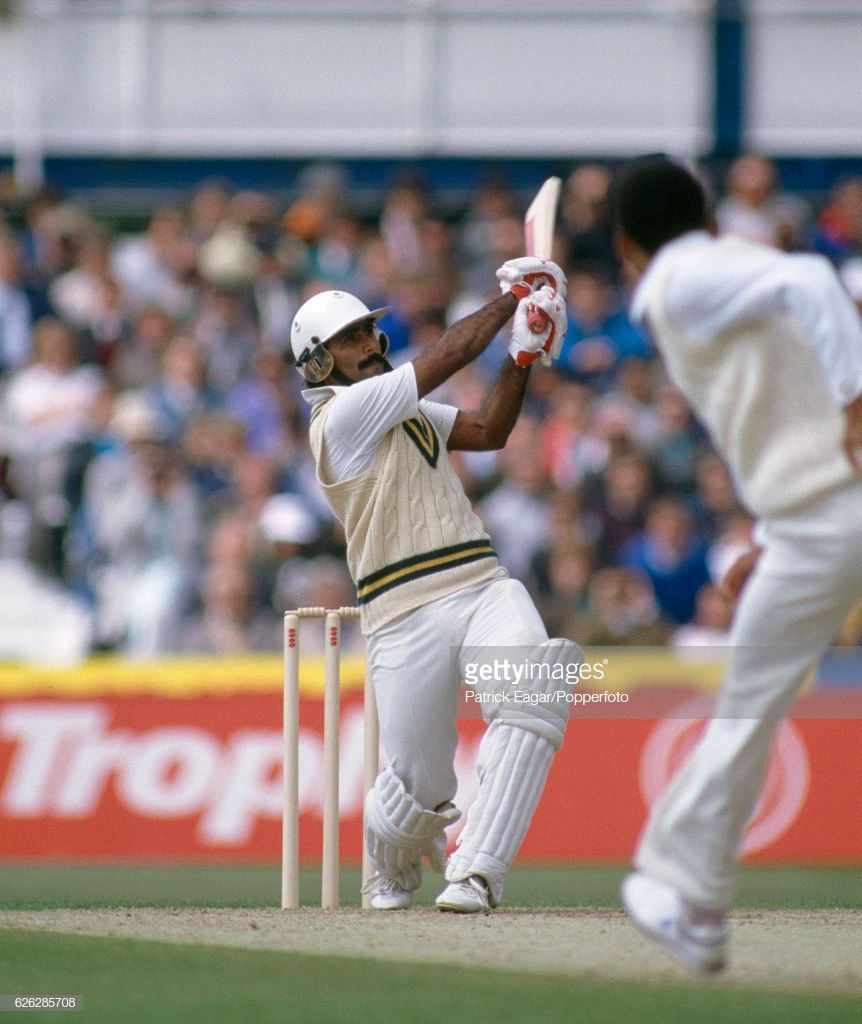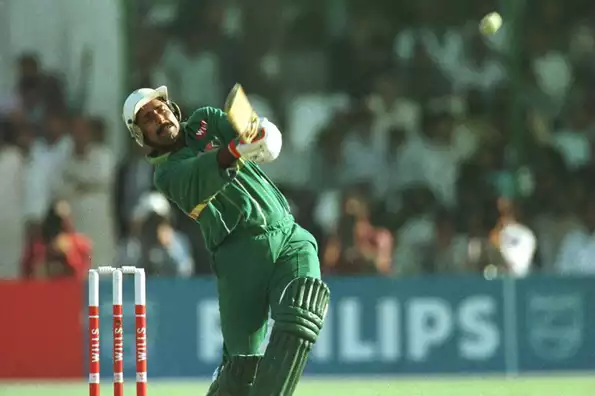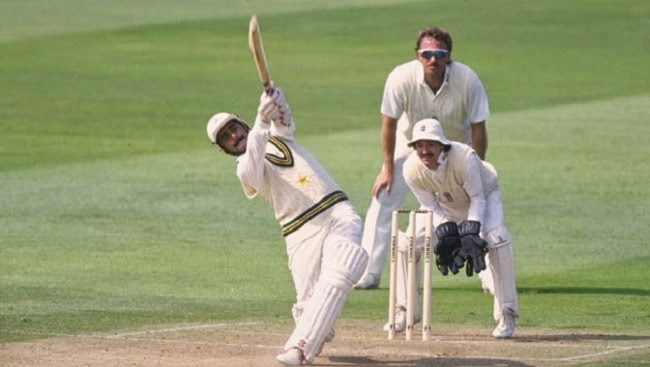ghazi52
PDF THINK TANK: ANALYST

- Joined
- Mar 21, 2007
- Messages
- 101,792
- Reaction score
- 106
- Country
- Location
Fazal Mahmood
Today, we mourn, we pay our respects, but most of all, we cherish Fazal Mahmood’s contribution to Pakistan cricket on the 15th death anniversary of the “Legend of Oval”.
Fazal was born on Feburary 18, 1927 in Lahore. His father, Professor Ghulam Hussain, encouraged Fazal to play cricket from an early age and his sporting ability quickly became apparent. While he was still at school, Fazal started a physical fitness programme that would serve him well through his career. He completed a daily ten-mile jog and 500 jumps of a skipping rope, and would then finish off with 70 or 80 laps of the swimming pool during summer. This routine undoubtedly assisted his later capacity to bowl long spells without losing speed or accuracy.
After playing for Islamia College, Fazal was selected for his first first-class match in the annual Ranji Trophy competition in 1944. He represented the Northern India Cricketing Association, and his first wicket was the Indian Test cricketer Lala Amarnath. Fazal performed well in his subsequent first-class matches, and was considered unlucky not to be selected to tour England with the All-India side in 1946. The following year saw a continuation of his fine form, and in March 1947 he was named in the Indian side to travel to Australia later that year.
However, the Partition took place in 1947, and Fazal ultimately decided that he would not represent India and declined his place in the side. This choice meant that Fazal had to wait another five years to play Test cricket, as Pakistan was not made a full Test-playing member of the ICC until 1952.
Fazal was selected to play in Pakistan's inaugural Test, against India in Delhi in October 1952. This match was not a great success for Fazal, or indeed for any of the Pakistan team, with the visitors losing by an innings and 70 runs. The performance was quickly forgotten less than a week later, with Pakistan beating India by an innings and 43 runs in Lucknow. In just his second Test match, Fazal was instrumental, taking 5 for 52 and 7 for 42, as well as scoring a useful 29. His match figures of 12 for 94 compare well to Mitchell Johnson's recent 12 for 127 against South Africa. Ultimately, India won the five-Test series 2-1, but it was clear that Pakistan had uncovered a genuinely world-class bowler.
Pakistan's next international series was against England in Britain in 1954. This was seen as being a far harder test of the tourists' cricketing abilities than their previous Indian tour. The first Test was largely washed out, but Fazal showed early signs of his skills, taking 4 for 54 in England's only completed innings. The second Test was a disaster for both Pakistan and Fazal. After being dismissed for just 157, Pakistan's bowlers toiled away largely unproductively while England compiled a massive 558 for 6 declared, which underpinned their final victory by an innings and 129 runs. Concerns about Pakistan being prematurely admitted as a Test nation were raised when England dominated a rain-affected draw in the third Test. However, these murmurs were quickly silenced when Pakistan won the fourth Test and therefore drew the four match series 1-1. Fazal took 12 wickets in a match for the second time, with 6 for 53 and 6 for 46, and his bowling was again instrumental in Pakistan's victory.
Space limitations prevent a full recount of all Fazal's performances at Test level. He played a total of 34 Test matches between 1952 and 1962, taking 139 wickets at 24.70. Perhaps astonishingly, his best Test figures came from a match not against India, in October 1956, when he took 13 for 114 against Australia on matting in Karachi. Yet again his bowling was the key in Pakistan achieving their first win against a major Test competitor*.
Fazal took five wickets in an innings 13 times, and ten wickets in a match four times. He took five wickets in an innings approximately 25% of the time he bowled, which compares well to other players who largely carried their nation's attacks single-handedly, such as Muttiah Muralitharan (29%) and Richard Hadlee (24%).
He also led Pakistan ten times between 1959 and 1961, with a reasonable record of two wins, two losses and six draws. It is interesting to note that his bowling average as captain (19.14) is significantly better than his average when not captaining (27.03). After deciding to step down from both Test and first-class cricket in 1962, he continued working for the Pakistan Police Service, which had employed him since 1947, until his retirement in 1987.
After retiring from his lifelong role with the police, he become a strong advocate for the rights of the underprivileged, and used his own funds to open a school specifically to educate girls in rural areas. Fazal was obviously a wonderful bowler, but it appears he was an equally fine human being.

Today, we mourn, we pay our respects, but most of all, we cherish Fazal Mahmood’s contribution to Pakistan cricket on the 15th death anniversary of the “Legend of Oval”.
Fazal was born on Feburary 18, 1927 in Lahore. His father, Professor Ghulam Hussain, encouraged Fazal to play cricket from an early age and his sporting ability quickly became apparent. While he was still at school, Fazal started a physical fitness programme that would serve him well through his career. He completed a daily ten-mile jog and 500 jumps of a skipping rope, and would then finish off with 70 or 80 laps of the swimming pool during summer. This routine undoubtedly assisted his later capacity to bowl long spells without losing speed or accuracy.
After playing for Islamia College, Fazal was selected for his first first-class match in the annual Ranji Trophy competition in 1944. He represented the Northern India Cricketing Association, and his first wicket was the Indian Test cricketer Lala Amarnath. Fazal performed well in his subsequent first-class matches, and was considered unlucky not to be selected to tour England with the All-India side in 1946. The following year saw a continuation of his fine form, and in March 1947 he was named in the Indian side to travel to Australia later that year.
However, the Partition took place in 1947, and Fazal ultimately decided that he would not represent India and declined his place in the side. This choice meant that Fazal had to wait another five years to play Test cricket, as Pakistan was not made a full Test-playing member of the ICC until 1952.
Fazal was selected to play in Pakistan's inaugural Test, against India in Delhi in October 1952. This match was not a great success for Fazal, or indeed for any of the Pakistan team, with the visitors losing by an innings and 70 runs. The performance was quickly forgotten less than a week later, with Pakistan beating India by an innings and 43 runs in Lucknow. In just his second Test match, Fazal was instrumental, taking 5 for 52 and 7 for 42, as well as scoring a useful 29. His match figures of 12 for 94 compare well to Mitchell Johnson's recent 12 for 127 against South Africa. Ultimately, India won the five-Test series 2-1, but it was clear that Pakistan had uncovered a genuinely world-class bowler.
Pakistan's next international series was against England in Britain in 1954. This was seen as being a far harder test of the tourists' cricketing abilities than their previous Indian tour. The first Test was largely washed out, but Fazal showed early signs of his skills, taking 4 for 54 in England's only completed innings. The second Test was a disaster for both Pakistan and Fazal. After being dismissed for just 157, Pakistan's bowlers toiled away largely unproductively while England compiled a massive 558 for 6 declared, which underpinned their final victory by an innings and 129 runs. Concerns about Pakistan being prematurely admitted as a Test nation were raised when England dominated a rain-affected draw in the third Test. However, these murmurs were quickly silenced when Pakistan won the fourth Test and therefore drew the four match series 1-1. Fazal took 12 wickets in a match for the second time, with 6 for 53 and 6 for 46, and his bowling was again instrumental in Pakistan's victory.
Space limitations prevent a full recount of all Fazal's performances at Test level. He played a total of 34 Test matches between 1952 and 1962, taking 139 wickets at 24.70. Perhaps astonishingly, his best Test figures came from a match not against India, in October 1956, when he took 13 for 114 against Australia on matting in Karachi. Yet again his bowling was the key in Pakistan achieving their first win against a major Test competitor*.
Fazal took five wickets in an innings 13 times, and ten wickets in a match four times. He took five wickets in an innings approximately 25% of the time he bowled, which compares well to other players who largely carried their nation's attacks single-handedly, such as Muttiah Muralitharan (29%) and Richard Hadlee (24%).
He also led Pakistan ten times between 1959 and 1961, with a reasonable record of two wins, two losses and six draws. It is interesting to note that his bowling average as captain (19.14) is significantly better than his average when not captaining (27.03). After deciding to step down from both Test and first-class cricket in 1962, he continued working for the Pakistan Police Service, which had employed him since 1947, until his retirement in 1987.
After retiring from his lifelong role with the police, he become a strong advocate for the rights of the underprivileged, and used his own funds to open a school specifically to educate girls in rural areas. Fazal was obviously a wonderful bowler, but it appears he was an equally fine human being.











